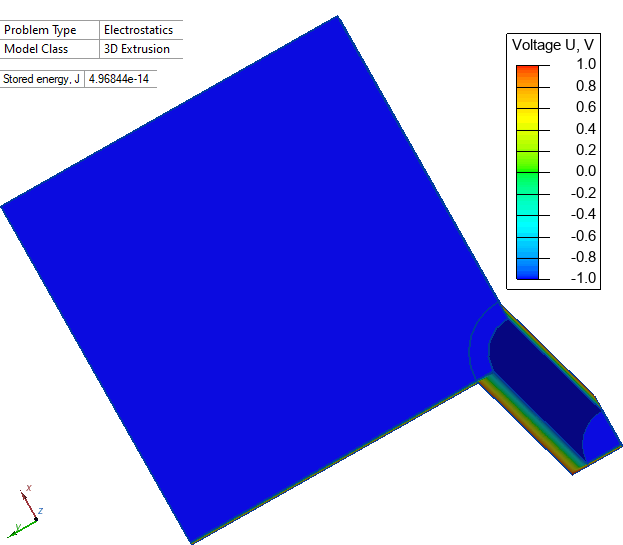Etched anode foil capacitance
QuickField simulation example
Capacitance of the capacitors depends on the size of the electrode surfaces. To increase the surface area, anodes of the aluminum electrolytic capacitors are are electrochemically etched.
In this example we calculate the capacitance of the film with a cylindrical pit which represents a small part of the electrolytic capacitor.
Problem Type
3D problem of electrostatics.
Geometry
Given
Relative permittivity of aluminum oxide ε = 10.
Task
Calculate the capacitance of a film with a cylindrical pit.
Solution
We apply electric potential +1V to anode and -1V to cathode. QuickField then calculates the electric potential distribution and the stored electric field energy.
The capacitance is 2*Energy / (Potential difference)².
The geometry model features symmetry, so we simulate only a quarter of the full model.
Results
Stored energy 5e-14 W. Potential difference is 2V. Capacitance is 2*5 e-14 / 2² = 0.025 pF per 5μm*5μm of the foil area.
Anode foil specific capacitance is 0.025 / (5e-6*5e-6) = 100 nF/mm².

- Video: Etched anode foil capacitance. Watch on YouTube
- Download simulation files (files may be viewed using any QuickField Edition).